Synthesis and Effect of Encapsulating Rejuvenator Fiber on the Performance of Asphalt Mixture
Abstract
1. Introduction
2. Materials and Test Methods
2.1. Gradation Design of Asphalt Mixture
2.2. Synthesis of the Three Kinds of Fibers
2.3. Characterization of the Three Kinds of Fibers
2.4. Road Performances of Asphalt Mixture with the Fibers
2.5. Self-Healing Capability of Asphalt Mixture with the Fibers
3. Results and Discussion
3.1. Characterization of Three Kinds of Self-Healing Fibers
3.1.1. Morphology
3.1.2. Chemical Structure
3.1.3. Thermal Stability
3.2. Road Performance of the Asphalt Mixture with Fibers
3.2.1. High-Temperature Performance
3.2.2. Low Temperature Performance
3.2.3. Water Sensitivity
3.2.4. Fatigue Performance
3.3. Self-Healing Capacity of the Asphalt Mixture with Fibers
4. Conclusions
- (a)
- Ca–alginate fiber, Ca–alginate/SiO2 composite fiber and Ca–alginate/GO composite fiber were successfully synthesized by microfluidic device. Nano SiO2 and GO particles were incorporated into the fiber wall. Rejuvenator was encapsulated inside those fibers in the form of droplets. The three kinds of fibers had excellent thermal stability, which meet the temperature requirement in the mixing and compaction process of asphalt mixture.
- (b)
- The addition of the three kinds of fibers improved high temperature anti-rutting ability of asphalt mixture. In addition, those fibers increased flexural strength and flexural modulus, while slightly decreased flexural strain of asphalt mixture. Moisture stability of asphalt mixture containing the fiber had a slight decrease. In addition, the fibers could prolong fatigue life of asphalt mixture under the action of encapsulated rejuvenator. In short, the road performances of asphalt mixture containing the fiber meet the requirements.
- (c)
- The self-healing ability of asphalt mixture with fiber was better than that of asphalt mixture without the fiber. It was worth noting that the synergistic action of microwave heating and rejuvenator could further significantly improve the self-healing ability of asphalt mixture.
- Three kinds of fibers encapsulating asphalt rejuvenator were synthesized;
- Road performance of asphalt mixture containing the fiber met the requirements;
- Three kinds of fibers could improve self-healing ability of asphalt mixture.
Author Contributions
Funding
Conflicts of Interest
References
- Li, Y.; Wu, S.; Pang, L.; Liu, Q.; Wang, Z.; Zhang, A. Investigation of the effect of Mg-Al-LDH on pavement performance and aging resistance of styrene-butadiene-styrene modified asphalt. Constr. Build. Mater. 2018, 172, 584–596. [Google Scholar] [CrossRef]
- Sreedhar, S.; Coleri, E. Effects of binder content, density, gradation, and polymer modification on cracking and rutting resistance of asphalt mixtures used in Oregon. J. Mater. Civil Eng. 2018, 30, 04018298. [Google Scholar] [CrossRef]
- Garcia, A.; Jelfs, J.; Austin, C.J. Internal asphalt mixture rejuvenation using capsules. Constr. Build. Mater. 2015, 101, 309–316. [Google Scholar] [CrossRef]
- Li, R.; Yu, Y.; Zhou, B.; Guo, Q.; Li, M.; Pei, J. Harvesting energy from pavement based on piezoelectric effects: Fabrication and electric properties of piezoelectric vibrator. J. Renew. Sustain. Energy 2018, 10, 54701. [Google Scholar] [CrossRef]
- Li, R.; Guo, Q.; Shi, Z.; Pei, J. Effects of conductive carbon black on PZT/PVDF composites. Ferroelectrics 2018, 526, 176–186. [Google Scholar] [CrossRef]
- Li, R.; Dai, Y.; Wang, P.; Sun, C.; Zhang, J.; Pei, J. Evaluation of Nano-ZnO dispersed state in bitumen with digital imaging processing technologies. J. Test. Eval. 2018, 46, 974–983. [Google Scholar] [CrossRef]
- Chen, Z.; Wu, S.; Xiao, Y.; Zeng, W.; Yi, M.; Wan, J. Effect of hydration and silicone resin on basic oxygen furnace slag and its asphalt mixture. J. Clean. Prod. 2016, 112, 392–400. [Google Scholar] [CrossRef]
- Xiao, Y.; Wang, F.; Cui, P.; Lei, L.; Lin, J.; Yi, M. Evaluation of fine aggregate morphology by image method and its effect on skid-resistance of micro-surfacing. Materials 2018, 11, 920. [Google Scholar] [CrossRef]
- Kong, D.; Chen, M.; Xie, J.; Zhao, M.; Yang, C. Geometric characteristics of BOF slag coarse aggregate and its influence on asphalt concrete. Materials 2019, 12, 741. [Google Scholar] [CrossRef]
- Ganjei, M.A.; Aflaki, E. Application of nano-silica and styrene-butadiene-styrene to improve asphalt mixture self healing. Int. J. Pave. Eng. 2019, 20, 89–99. [Google Scholar] [CrossRef]
- Gupta, S.; Zhang, Q.; Emrick, T.; Balazs, A.C.; Russell, T.P.J.N.M. Entropy-driven segregation of nanoparticles to cracks in multilayered composite polymer structures. Nat. Mater. 2006, 5, 229–233. [Google Scholar] [CrossRef]
- Liu, Q.; Yu, W.; Wu, S.; Schlangen, E.; Pan, P. A comparative study of the induction healing behaviors of hot and warm mix asphalt. Constr. Build. Mater. 2017, 144, 663–670. [Google Scholar] [CrossRef]
- Norambuena-Contreras, J.; Garcia, A. Self-healing of asphalt mixture by microwave and induction heating. Mater. Des. 2016, 106, 404–414. [Google Scholar] [CrossRef]
- Li, C.; Wu, S.; Chen, Z.; Tao, G.; Xiao, Y. Enhanced heat release and self-healing properties of steel slag filler based asphalt materials under microwave irradiation. Constr. Build. Mater. 2018, 193, 32–41. [Google Scholar] [CrossRef]
- Norambuena-Contreras, J.; Gonzalez, A.; Concha, J.L.; Gonzalez-Torre, I.; Schlangen, E. Effect of metallic waste addition on the electrical, thermophysical and microwave crack-healing properties of asphalt mixtures. Constr. Build. Mater. 2018, 187, 1039–1050. [Google Scholar] [CrossRef]
- Sun, D.; Sun, G.; Zhu, X.; Guarin, A.; Li, B.; Dai, Z.; Ling, J. A comprehensive review on self-healing of asphalt materials: Mechanism, model, characterization and enhancement. Adv. Coll. Interface Sci. 2018, 256, 65–93. [Google Scholar] [CrossRef] [PubMed]
- Garcia, A.; Austin, C.J.; Jelfs, J. Mechanical properties of asphalt mixture containing sunflower oil capsules. J. Clean. Prod. 2016, 118, 124–132. [Google Scholar] [CrossRef]
- Tabakovic, A.; Post, W.; Cantero, D.; Copuroglu, O.; Garcia, S.J.; Schlangen, E.J.S.M.S. The reinforcement and healing of asphalt mastic mixtures by rejuvenator encapsulation in alginate compartmented fibres. Smart Mater. Struct. 2016, 25, 084003. [Google Scholar] [CrossRef]
- García, Á.; Schlangen, E.; van de Ven, M.; Sierra-Beltrán, G. Preparation of capsules containing rejuvenators for their use in asphalt concrete. J. Hazard. Mater. 2010, 184, 603–611. [Google Scholar] [CrossRef]
- Al-Mansoori, T.; Norambuena-Contreras, J.; Micaelo, R.; Garcia, A. Self-healing of asphalt mastic by the action of polymeric capsules containing rejuvenators. Constr. Build. Mater. 2018, 161, 330–339. [Google Scholar] [CrossRef]
- Shi, X.; Alvaro, G.; Junfeng, S.; Quantao, L.; Amir, T.; Erik, S.J.A.M.I. Self-Healing Asphalt Review: From Idea to Practice. Adv. Mater. Interfaces 2018. [CrossRef]
- Chung, K.; Lee, S.; Cho, W.; Seo, J.; Hong, Y. Rheological analysis of self-healing property of microcapsule-containing asphalt. J. Ind. Eng. Chem. 2018, 64, 284–291. [Google Scholar] [CrossRef]
- Sun, D.; Li, B.; Ye, F.; Zhu, X.; Lu, T.; Tian, Y. Fatigue behavior of microcapsule-induced self-healing asphalt concrete. J. Clean. Prod. 2018, 188, 466–476. [Google Scholar] [CrossRef]
- Sun, D.; Lu, T.; Zhu, X.; Li, B.; Tian, Y. Optimization of synthesis technology to improve the design of asphalt self-healing microcapsules. Constr. Build. Mater. 2018, 175, 88–103. [Google Scholar] [CrossRef]
- Li, R.; Zhou, T.; Pei, J. Design, preparation and properties of microcapsules containing rejuvenator for asphalt. Constr. Build. Mater. 2015, 99, 143–149. [Google Scholar] [CrossRef]
- Hongliang, Z.; Yuzan, B.; Fenglei, C.J.C.; Materials, B. Rheological and self-healing properties of asphalt binder containing microcapsules. Constr. Build. Mater. 2018, 187, 138–148. [Google Scholar]
- Norambuena-Contreras, J.; Yalcin, E.; Garcia, A.; Al-Mansoori, T.; Yilmaz, M.; Hudson-Griffiths, R. Effect of mixing and ageing on the mechanical and self-healing properties of asphalt mixtures containing polymeric capsules. Constr. Build. Mater. 2018, 175, 254–266. [Google Scholar] [CrossRef]
- Shu, B.; Wu, S.; Dong, L.; Wang, Q.; Liu, Q.J.M. Microfluidic synthesis of Ca–alginate microcapsules for self-healing of bituminous binder. Materials 2018, 11, 630. [Google Scholar] [CrossRef]
- Shu, B.; Zhang, L.; Wu, S.; Dong, L.; Liu, Q.; Wang, Q. Synthesis and characterization of compartmented Ca–alginate/silica self-healing fibers containing bituminous rejuvenator. Constr. Build. Mater. 2018, 190, 623–631. [Google Scholar] [CrossRef]
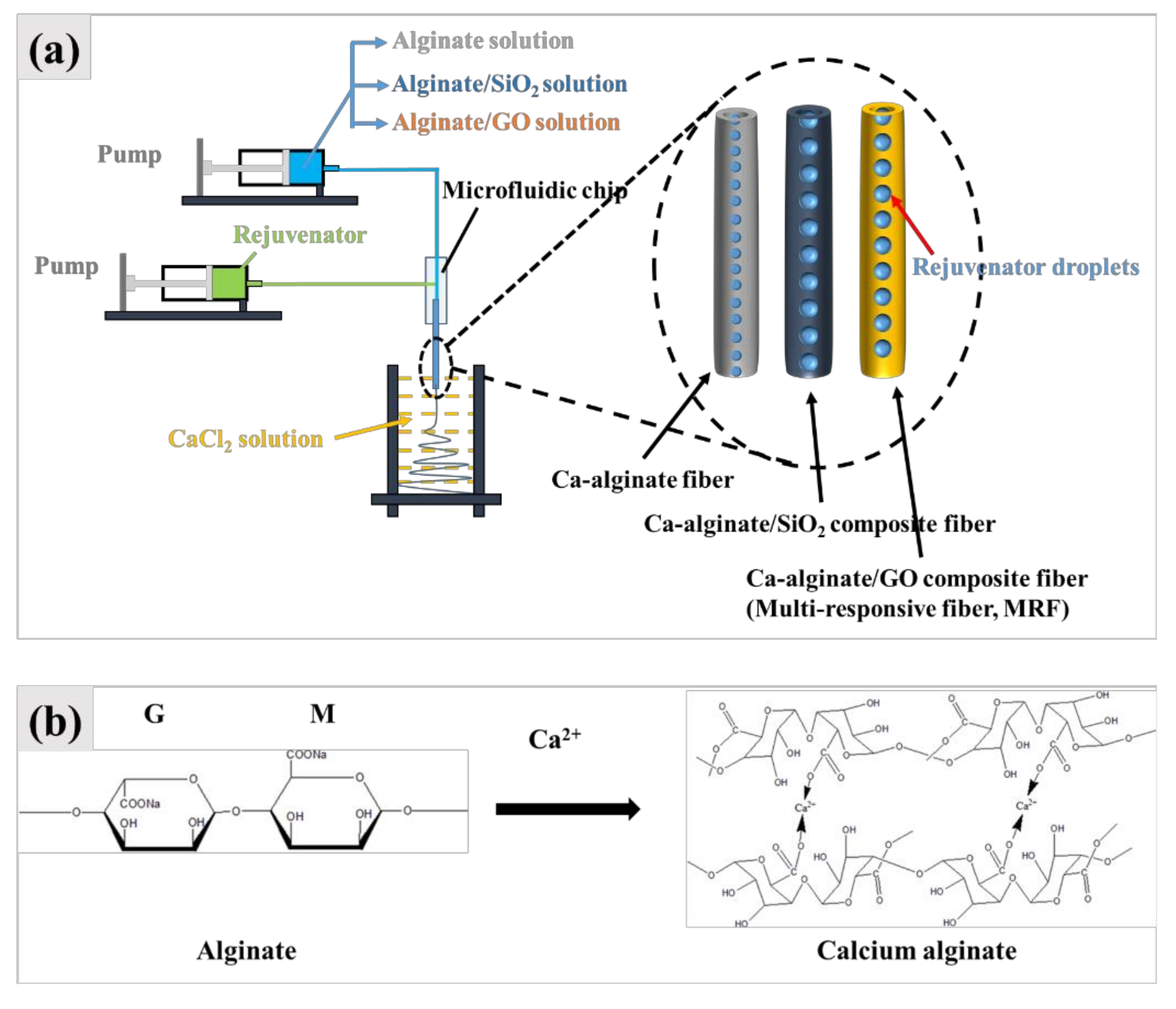
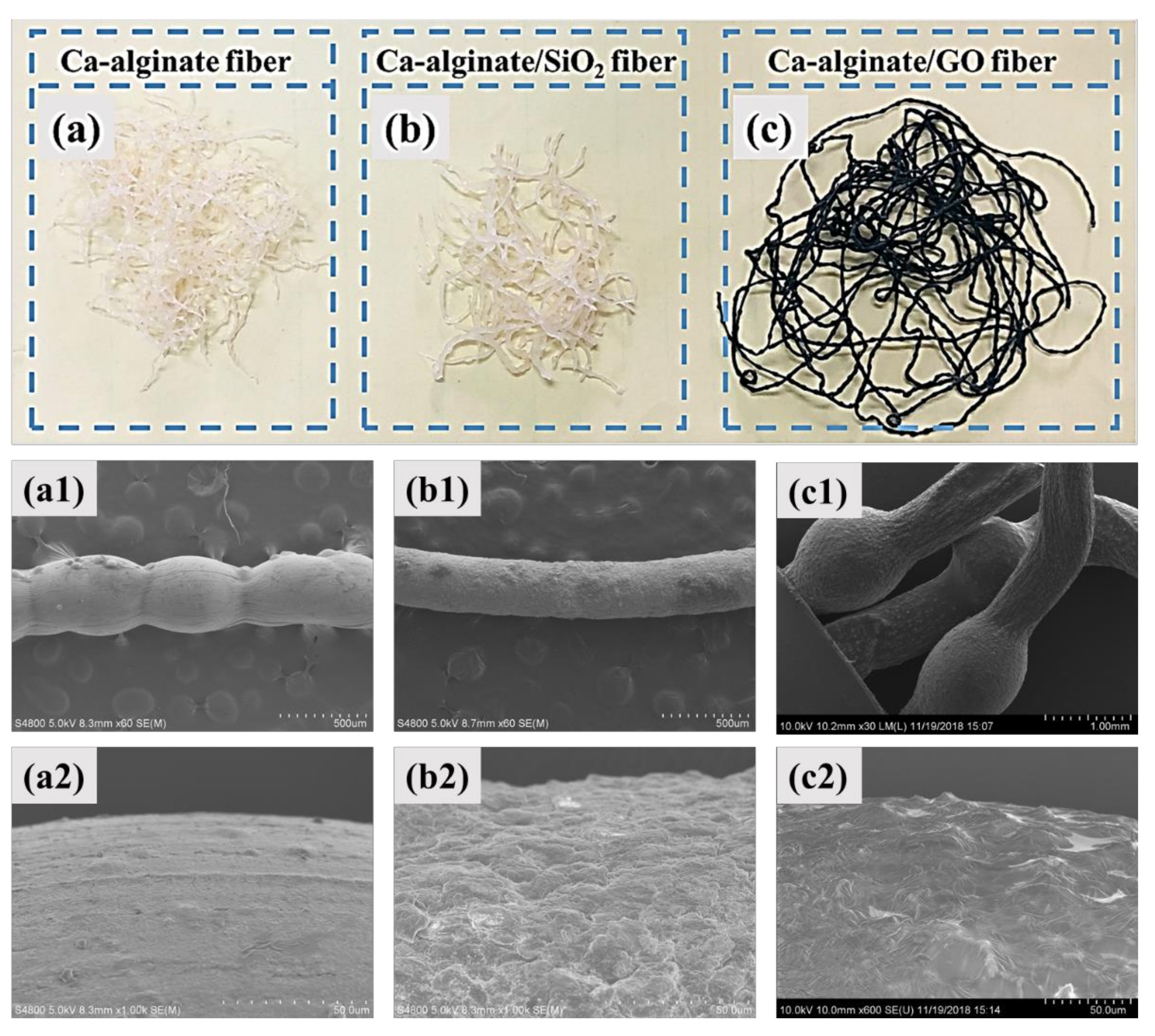
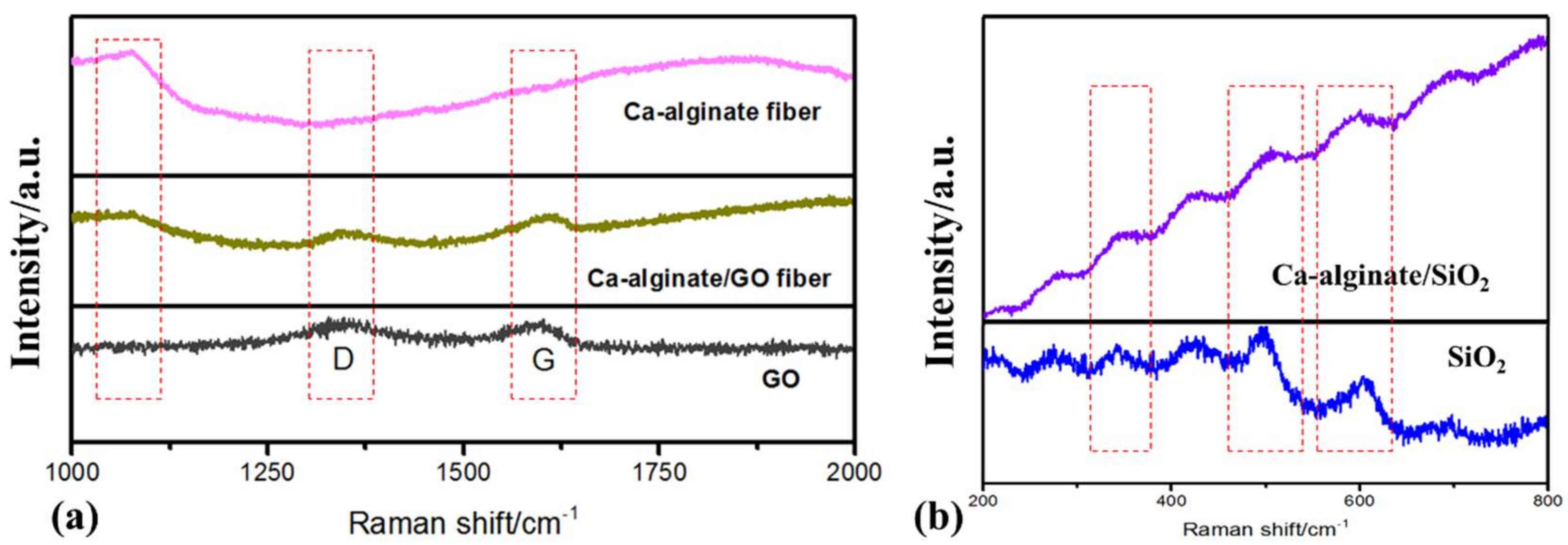
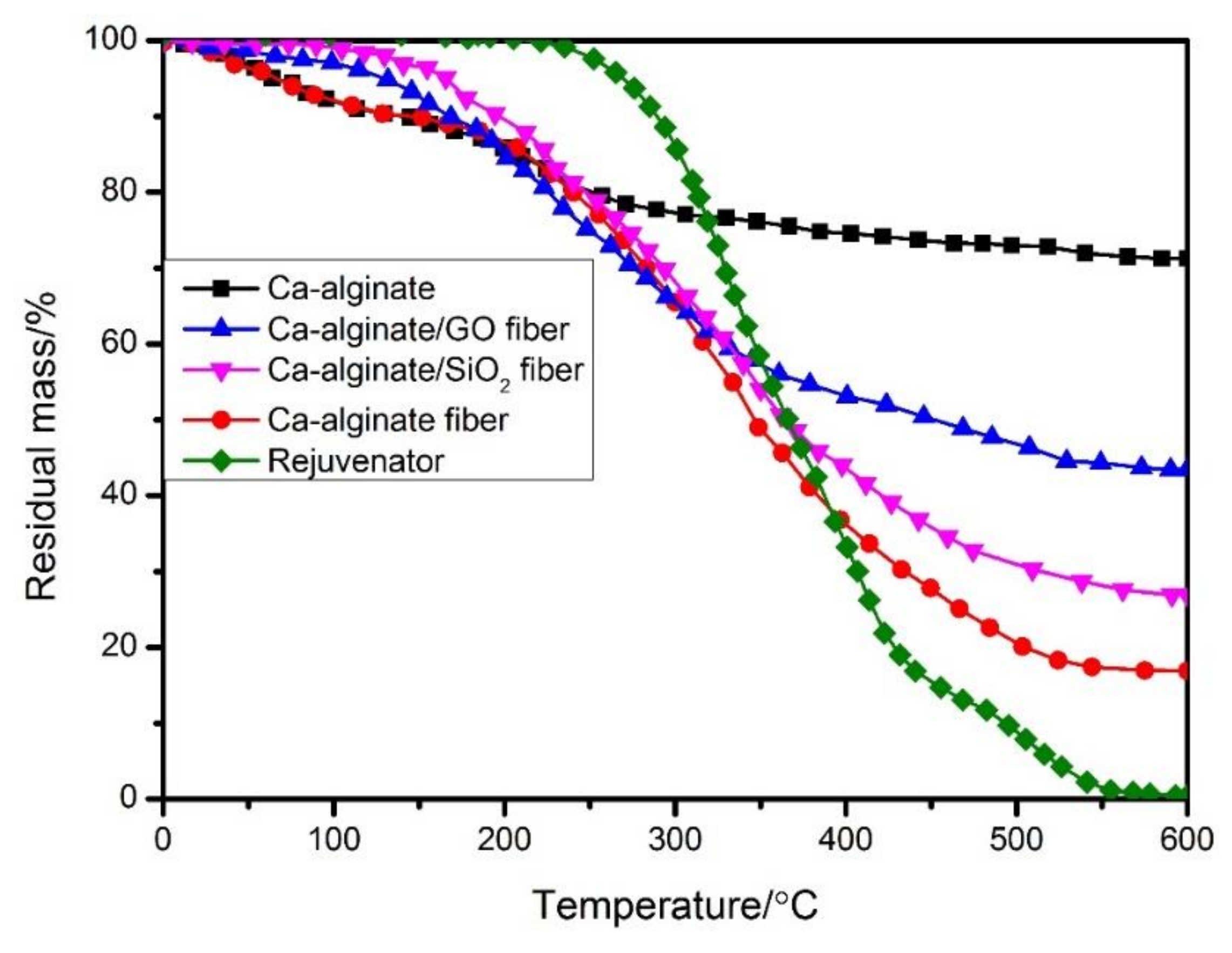
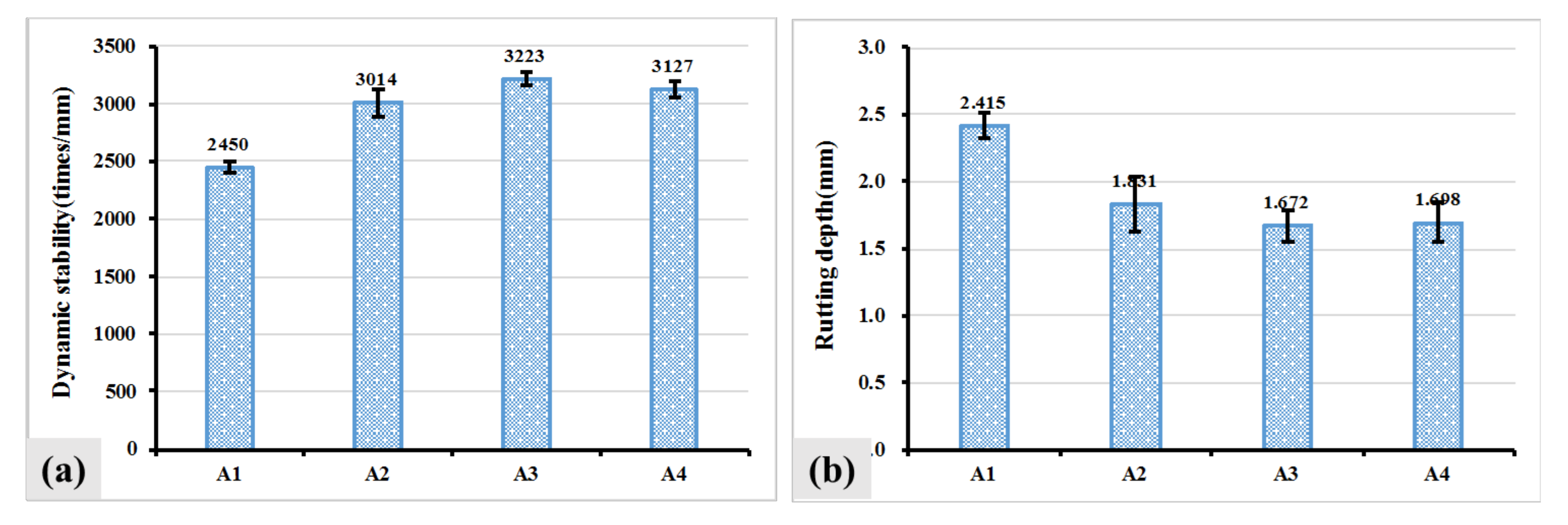

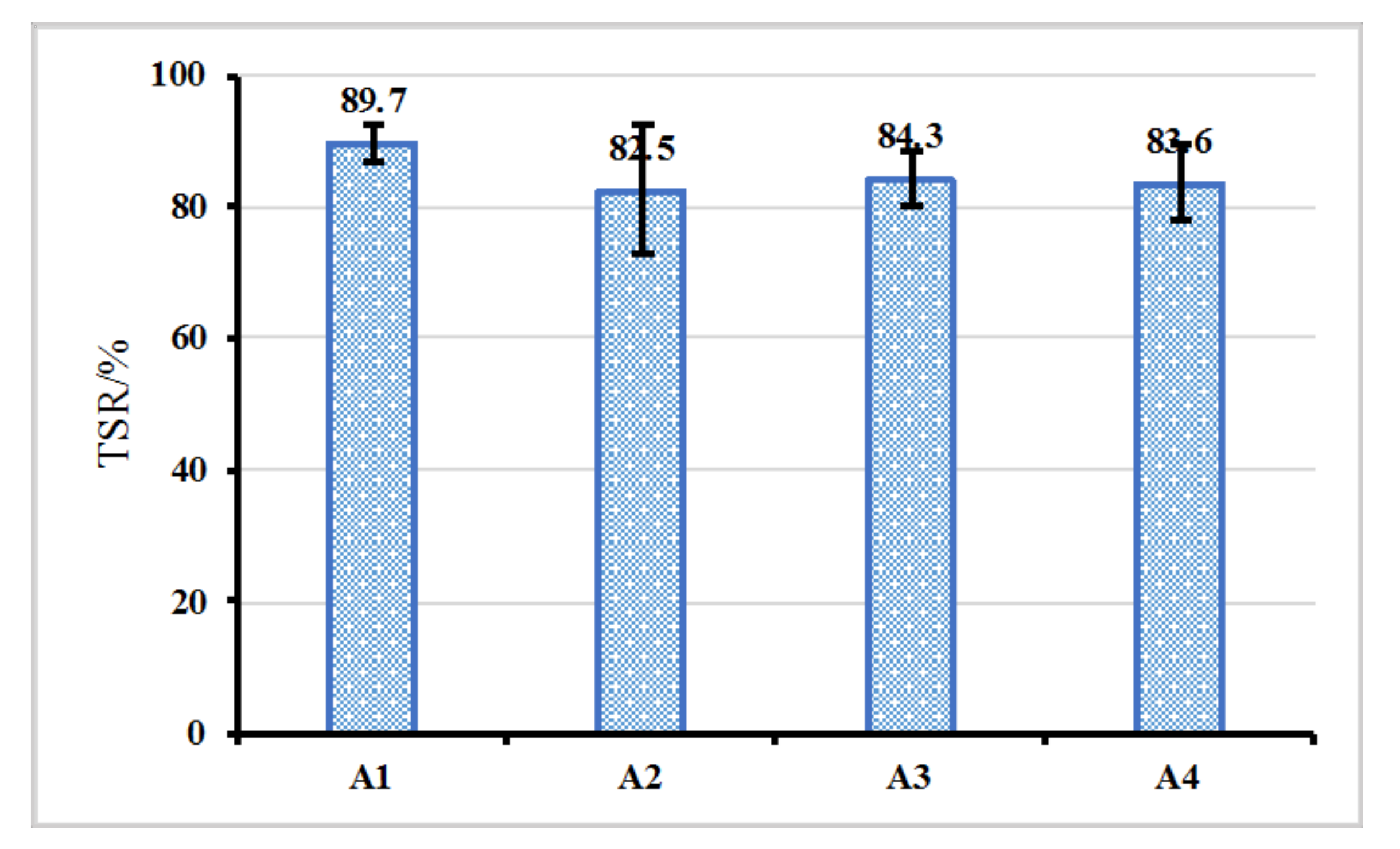
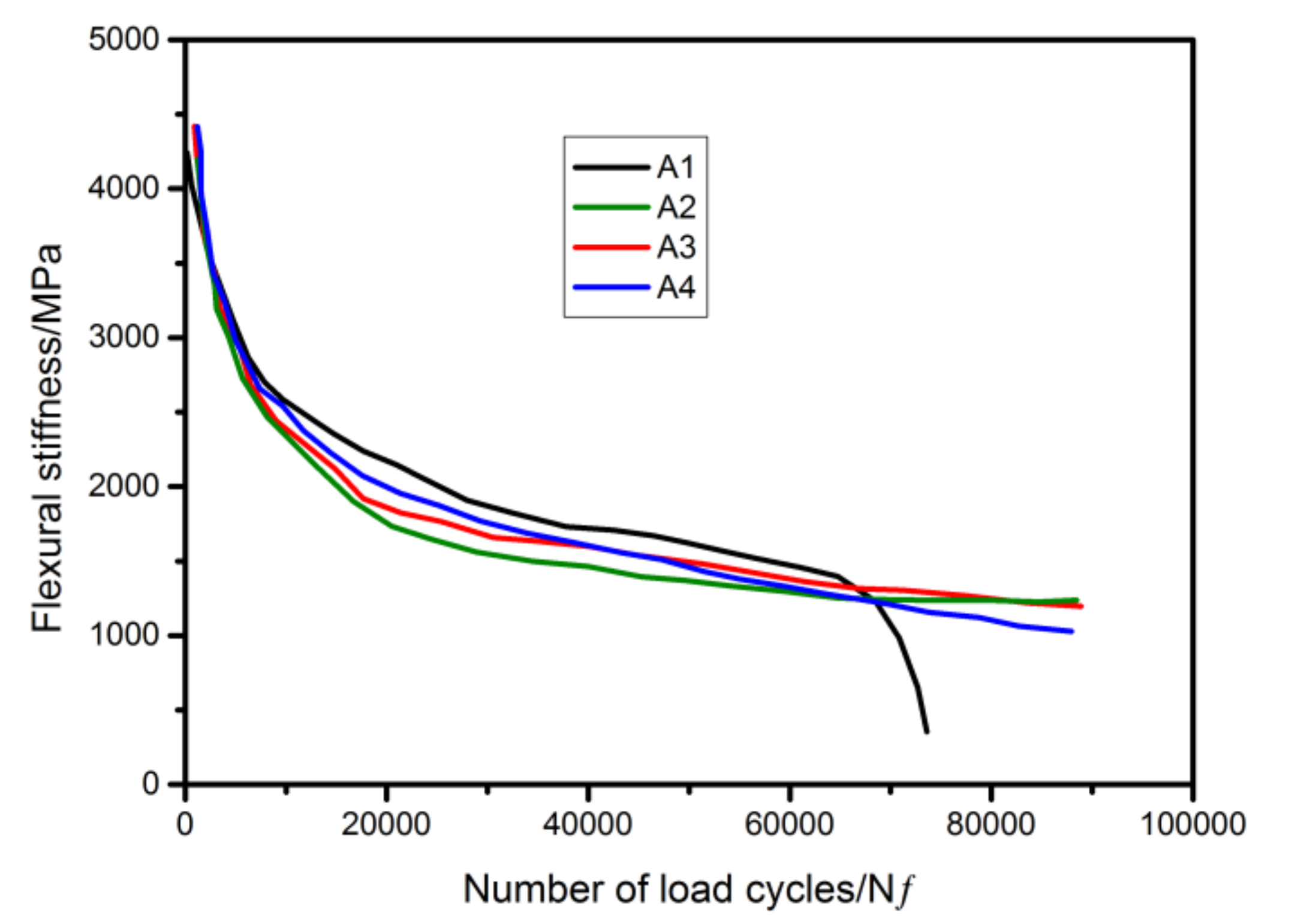
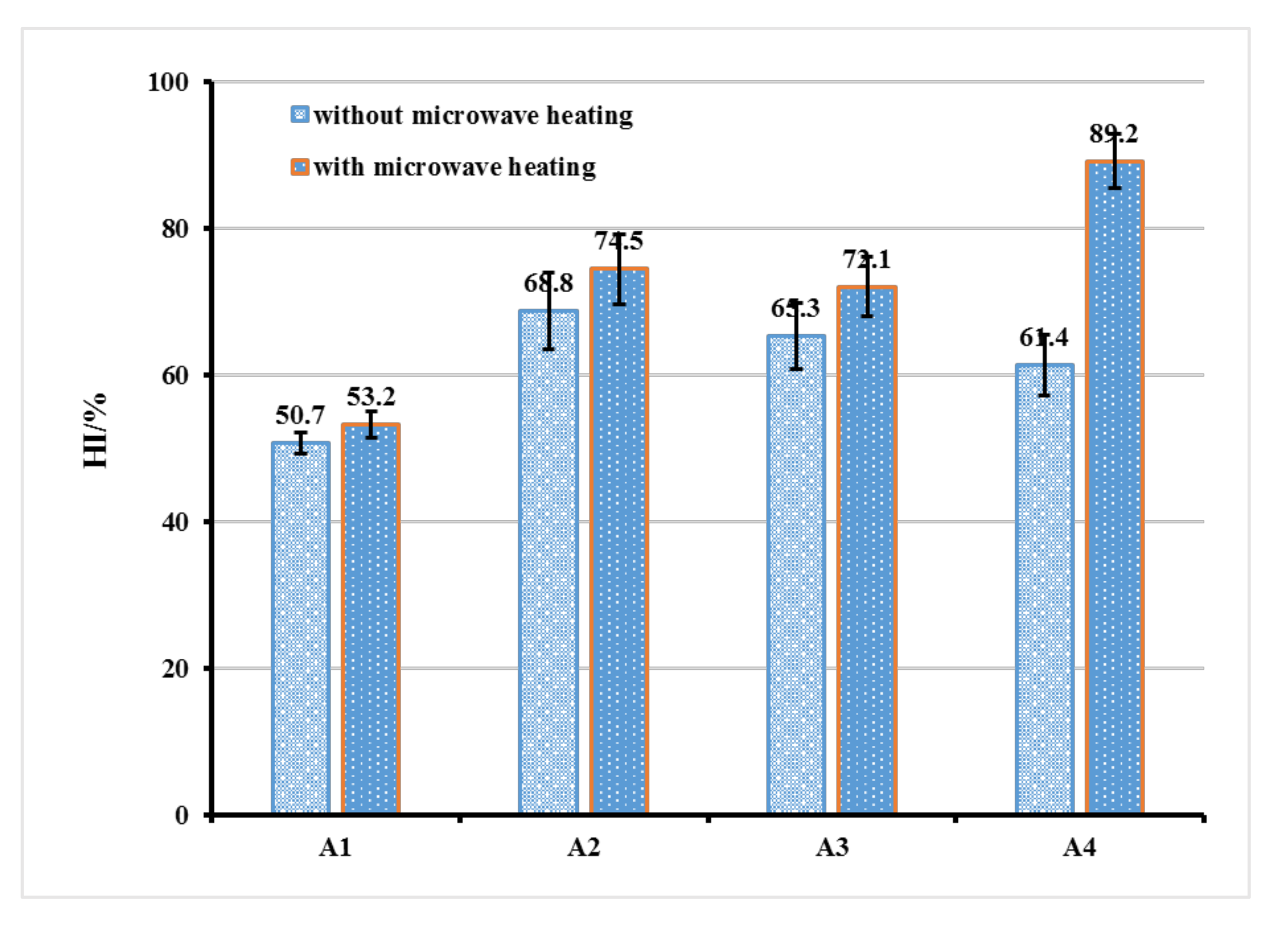
| Sieve Size/mm | Designed Gradation/% |
|---|---|
| 16 | 100 |
| 13.2 | 96.2 |
| 9.5 | 75.2 |
| 4.75 | 47.4 |
| 2.36 | 30.8 |
| 1.18 | 23.9 |
| 0.6 | 16.6 |
| 0.3 | 12.3 |
| 0.15 | 9.1 |
| 0.075 | 6.9 |
| Types of Fiber | Symbology | Types of Asphalt Mixture | Symbology |
|---|---|---|---|
| Ca–alginate fiber | AF | Asphalt mixture containing Ca–alginate fiber | A2 |
| Ca–alginate/SiO2 fiber | ASF | Asphalt mixture containing Ca–alginate/SiO2 fiber | A3 |
| Ca–alginate/GO fiber | MRF | Asphalt mixture containing Ca–alginate/GO fiber | A4 |
© 2019 by the authors. Licensee MDPI, Basel, Switzerland. This article is an open access article distributed under the terms and conditions of the Creative Commons Attribution (CC BY) license (http://creativecommons.org/licenses/by/4.0/).
Share and Cite
Shu, B.; Bao, S.; Wu, S.; Dong, L.; Li, C.; Yang, X.; Norambuena-Contreras, J.; Liu, Q.; Wang, Q. Synthesis and Effect of Encapsulating Rejuvenator Fiber on the Performance of Asphalt Mixture. Materials 2019, 12, 1266. https://doi.org/10.3390/ma12081266
Shu B, Bao S, Wu S, Dong L, Li C, Yang X, Norambuena-Contreras J, Liu Q, Wang Q. Synthesis and Effect of Encapsulating Rejuvenator Fiber on the Performance of Asphalt Mixture. Materials. 2019; 12(8):1266. https://doi.org/10.3390/ma12081266
Chicago/Turabian StyleShu, Benan, Shiwen Bao, Shaopeng Wu, Lijie Dong, Chao Li, Xu Yang, José Norambuena-Contreras, Quantao Liu, and Qing Wang. 2019. "Synthesis and Effect of Encapsulating Rejuvenator Fiber on the Performance of Asphalt Mixture" Materials 12, no. 8: 1266. https://doi.org/10.3390/ma12081266
APA StyleShu, B., Bao, S., Wu, S., Dong, L., Li, C., Yang, X., Norambuena-Contreras, J., Liu, Q., & Wang, Q. (2019). Synthesis and Effect of Encapsulating Rejuvenator Fiber on the Performance of Asphalt Mixture. Materials, 12(8), 1266. https://doi.org/10.3390/ma12081266









